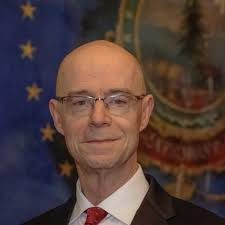IN 1981, I was with friends celebrating the Fourth of July weekend at New York’s Fire Island Pines gay enclave when life changed. Buried on page A20 of The New York Times (July 3,1981) was a report about a new condition: “Rare Cancer Seen in 41 Homosexuals.” Doctors in New York and San Francisco diagnosed a form of Kaposi’s Sarcoma cancer normally seen in elderly men suddenly ravaging younger gay males. The article assured us that it was not contagious and that “no cases have been reported to date outside the homosexual community or in women.”
Soon enough, purple lesions of Kaposi Sarcoma became markers of those infected. Panic and fear fueled conspiracy theories and misinformation regarding contagion. Risk groups were first identified as “the 4 H’s”: hemophiliacs, heroin addicts, homosexuals, and Haitians. Another unfounded hypothesis accused the government of creating the pathogen to eradicate the gay and African-American communities.
In 1982, AIDS (Acquired Immunodeficiency Syndrome) was named by the Centers for Disease Control. It took another three years to develop a blood test for HIV once it was identified as the cause, and almost fifteen years to develop a number of anti-retroviral drugs that, taken in various combinations, turned the disease from a death sentence into a manageable condition. But before that, chaos ruled on the public health front as millions died.
Federal leadership was lacking as the pandemic began to spread. President Reagan did not publicly mentioned AIDS until 1985. Senator Jesse Helms (R-North Carolina) called for quarantining people who tested positive. Then Secretary of Education, William Bennett, suggested that prisoners with the AIDS virus should remain in custody after serving their sentence so they could not take “revenge on society.” Conservative commentator William F. Buckley Jr. asserted in The New York Times: “Everyone detected with AIDS should be tattooed in the upper forearm, to protect common-needle users, and on the buttocks, to prevent the victimization of other homosexuals.”
With inaction, ignorance, and vitriol on the federal level, grassroots efforts organized. Gay Men’s Health Crisis in New York (1982), San Francisco AIDS Foundation (1982), and AIDS Project in Los Angeles (1983) were early examples of communities mobilizing information, support, treatment, and advocacy.
In these initial years, without any substantive information, friends, families, and medical staff did not know how contagious the disease was, so the sick were isolated. However, many frontline medical workers were heroic. Soon enough, community heart circles began to provide home healthcare and hospice. These then morphed into weekly memorial services for our lost ones. My lived experience of this era is still quite raw. My notebooks list 119 lost to AIDS.
I worry that we haven’t learned very much about the importance of scientific information and compassion in these early days of responding to COVID-19. Not only here in Vermont, but also on Cape Cod, Martha’s Vineyard, in the Hamptons and other east coast resort areas, social media posts warn second homeowners not to return, fearing they will use up scarce resources. Second homeowners are vital to many towns and states’ economies and they too are neighbors. Vermont Governor Scott’s directive to “Stay Home / Stay Safe” applies in whatever home we are in.
Already some European countries and China are discussing the dystopian notion of testing citizens to allow those showing immunity to return to work, even though researchers have yet to determine if the presence of coronavirus antibodies correlates with immunity and how long lasting it is. Best to let science catch up here. These COVID passports could separate the weak from the strong, the old from the young. Marginalization and stigmatization did not work in the AIDS crisis and it seems too early on in this disease to choose societal over individual rights.
We now all live with COVID-19. As we begin to mourn the dead, we will also need to embrace the survivors among us. May information sharing, self-care, community support, and advocacy continue to flourish in the dark days ahead.
 John R. Killacky, a Democrat who represents South Burlington in the Vermont House of Representatives, has been a contributor to The Gay & Lesbian Review since 2006.
John R. Killacky, a Democrat who represents South Burlington in the Vermont House of Representatives, has been a contributor to The Gay & Lesbian Review since 2006.







Discussion4 Comments
John,
Thanks so much for this. Eiko sent me the link, and I’m posting it on my class website. I hope you and your loved ones are all well.
Best,
Bill
Thanks so much.
Thanks for this.
Thank you.